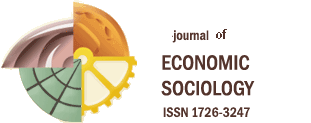Tatyana Cherkashina
Personal Income of Spouses in Russian Families’ Budgets in the 1990–2010s
2019.
Vol. 20.
No. 2.
P. 14–50
[issue contents]
The article presents the dynamics of the structure of budgets of Russian households, which differ in the ratio of the contributions of personal incomes and non-individual incomes. Economic relations are considered in matrimonial households in the macroeconomic and social context of the 1990–2010s. Calculations made on the data of the Russian Monitoring of the Economic Situation and Public Health of the National Research University Higher School of Economics (2004–2016) show that during this time the share of “double-income” spousal households increased to 82–83%; the amount of sole financial leadership in the family of both men and women was reduced, but due to the increase in the number of women who combine employment with receiving pensions, the share of families in which women’s incomes are higher than men’s increased. Macroeconomic conditions are reflected in the level of family budgets, and the worst situation was in 1996, which was not defined as crisis in public discourse: only in 45% of families did both spouses have incomes. A similar but less dire situation is observed in 1998: among married couples, 55% had two personal incomes. The declines in real income in 2008–2010 and 2014–2016 are designated as crises, but at the micro level, they had almost no effect on the basis of families with different types of budgets. The presence of only one personal income in the family budget significantly increases the risk of poverty, with the sole financial leadership of men in poor families accounting for 45–50% and with women’s financial leadership at about 70%. The transfer system is poorly insured families in which only a woman contributes to the family budget.
Citation:
(2019) Lichnye dokhody suprugov v strukture byudzhetov rossiyskikh semey v 1990–2010-e gg. [Personal Income of Spouses in Russian Families’ Budgets in the 1990–2010s]. Economic Sociology, vol. 20, no 2, pp. 14-50 (in Russian)




.gif)






 ©
© 